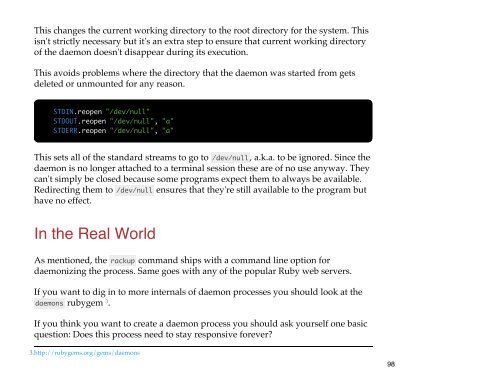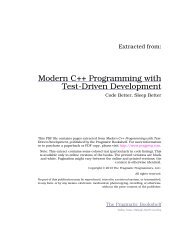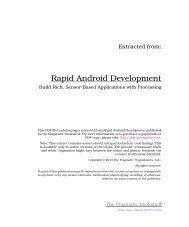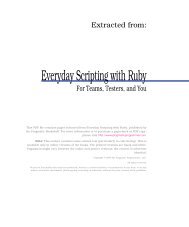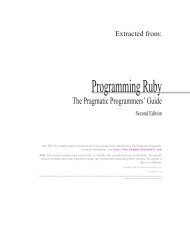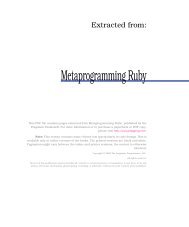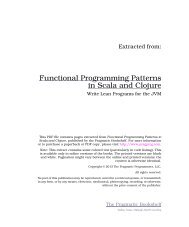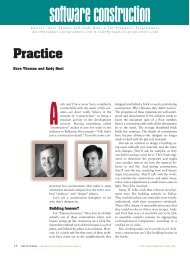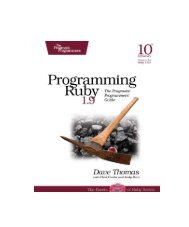Working with Unix Processes
Working with Unix Processes
Working with Unix Processes
- No tags were found...
You also want an ePaper? Increase the reach of your titles
YUMPU automatically turns print PDFs into web optimized ePapers that Google loves.
This changes the current working directory to the root directory for the system. Thisisn't strictly necessary but it's an extra step to ensure that current working directoryof the daemon doesn't disappear during its execution.This avoids problems where the directory that the daemon was started from getsdeleted or unmounted for any reason.STDIN.reopen "/dev/null"STDOUT.reopen "/dev/null", "a"STDERR.reopen "/dev/null", "a"This sets all of the standard streams to go to /dev/null , a.k.a. to be ignored. Since thedaemon is no longer attached to a terminal session these are of no use anyway. Theycan't simply be closed because some programs expect them to always be available.Redirecting them to /dev/null ensures that they're still available to the program buthave no effect.In the Real WorldAs mentioned, the rackup command ships <strong>with</strong> a command line option fordaemonizing the process. Same goes <strong>with</strong> any of the popular Ruby web servers.If you want to dig in to more internals of daemon processes you should look at thedaemons rubygem 3 .If you think you want to create a daemon process you should ask yourself one basicquestion: Does this process need to stay responsive forever?3.http://rubygems.org/gems/daemons98


